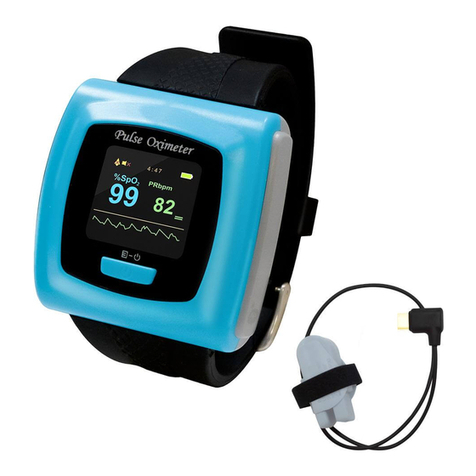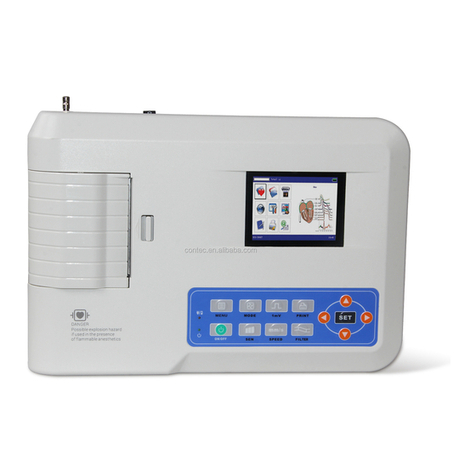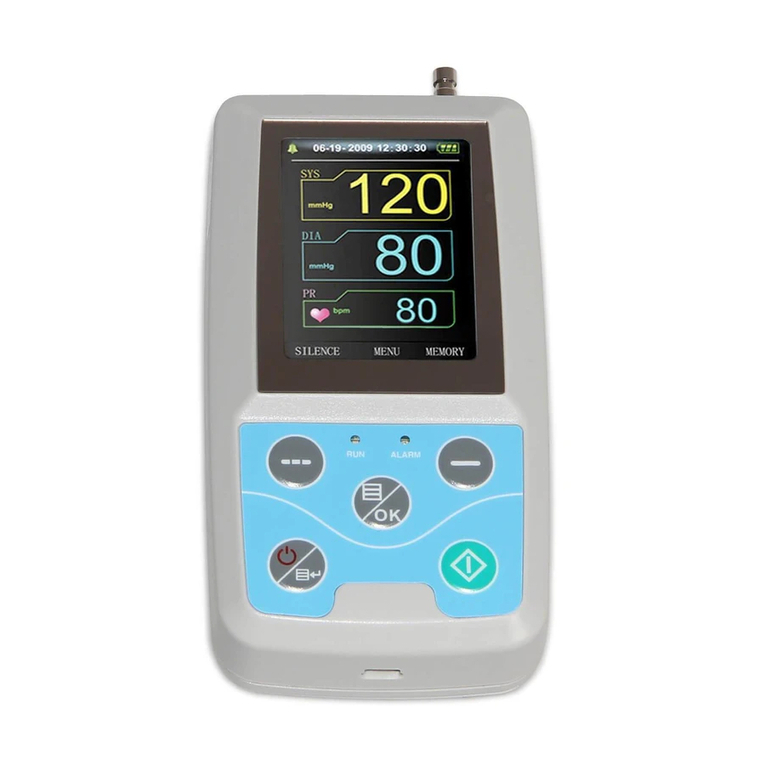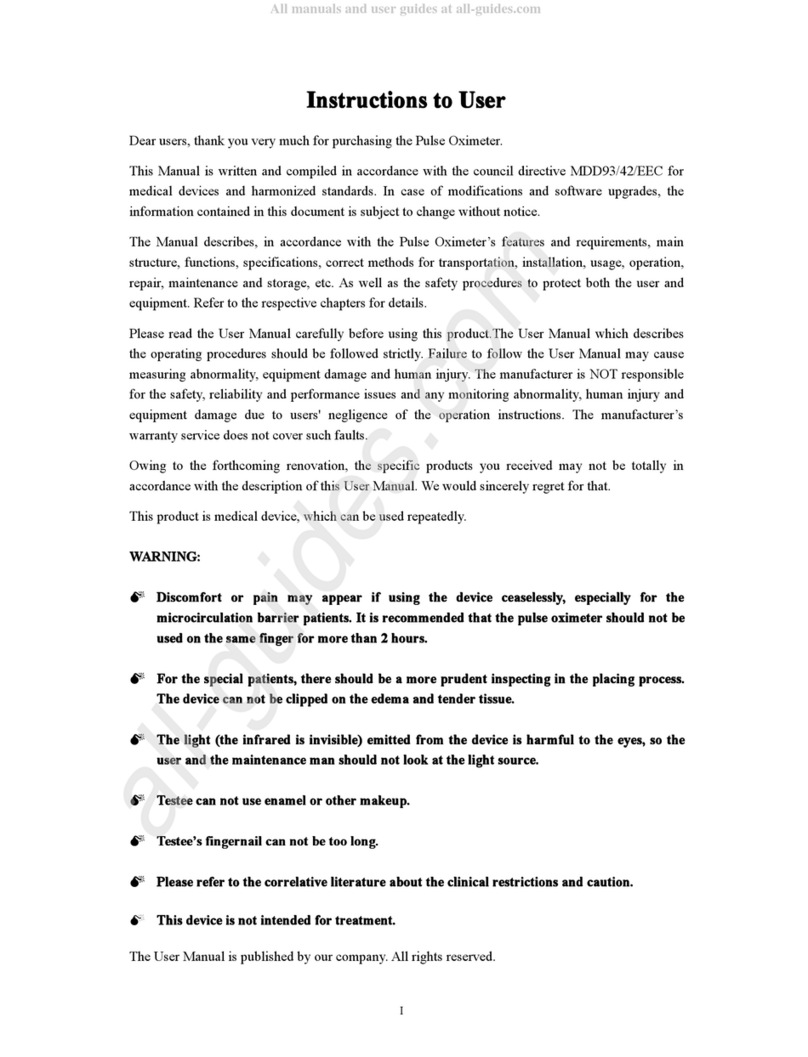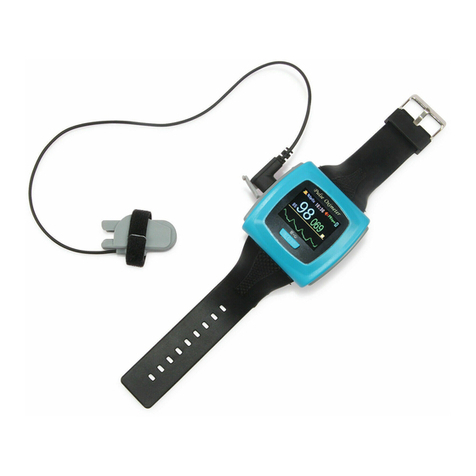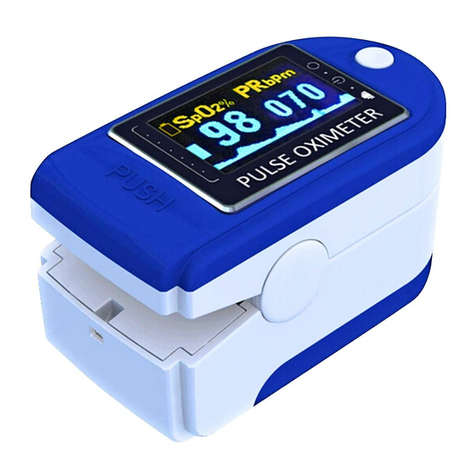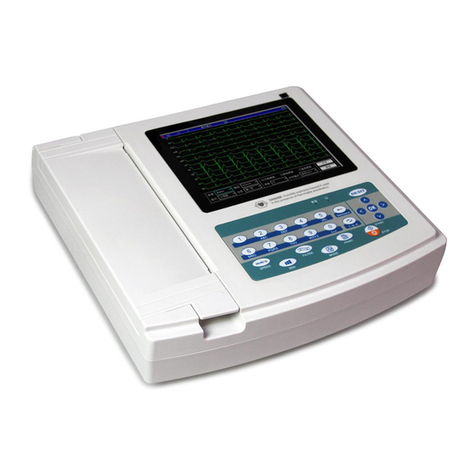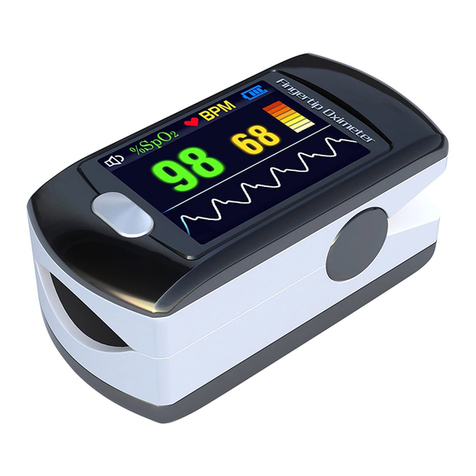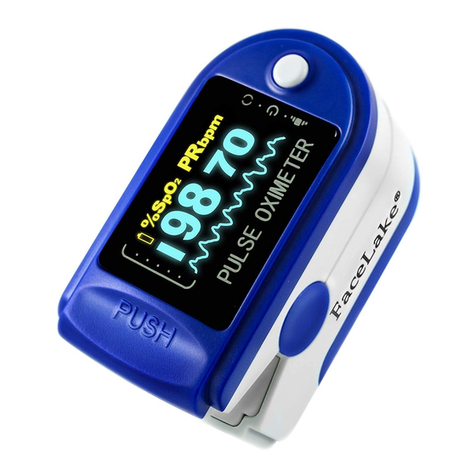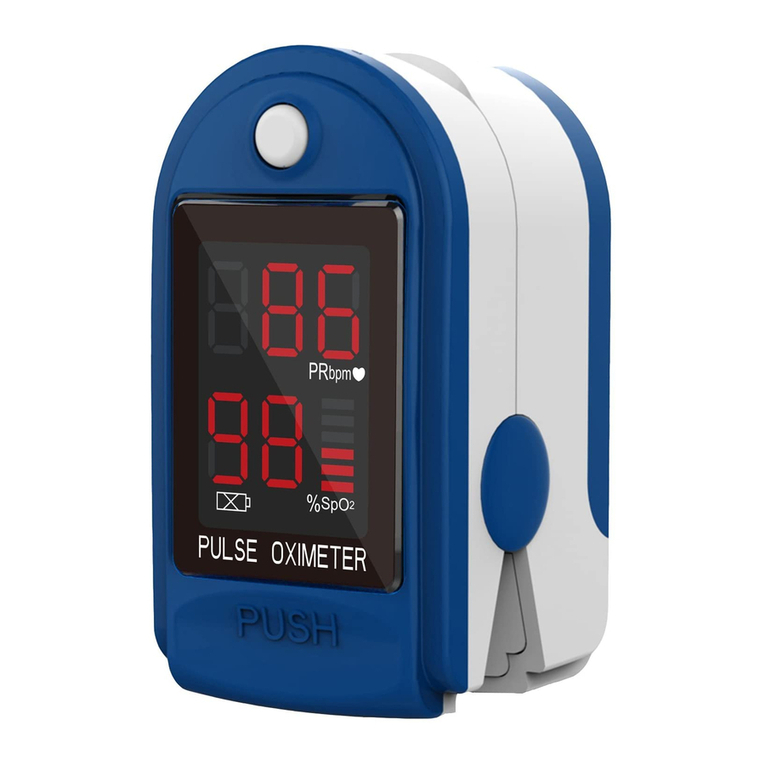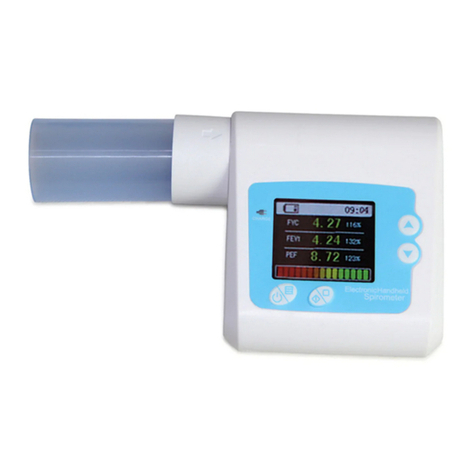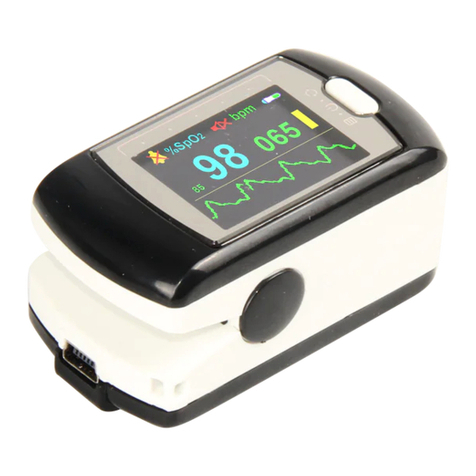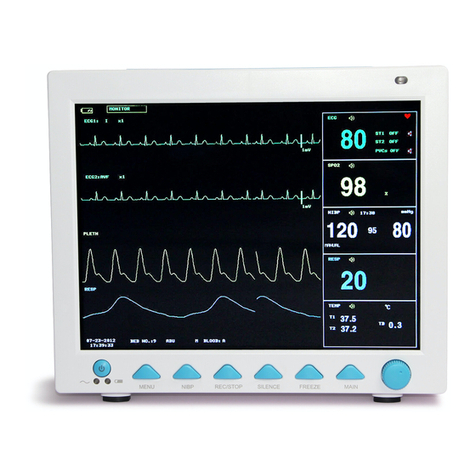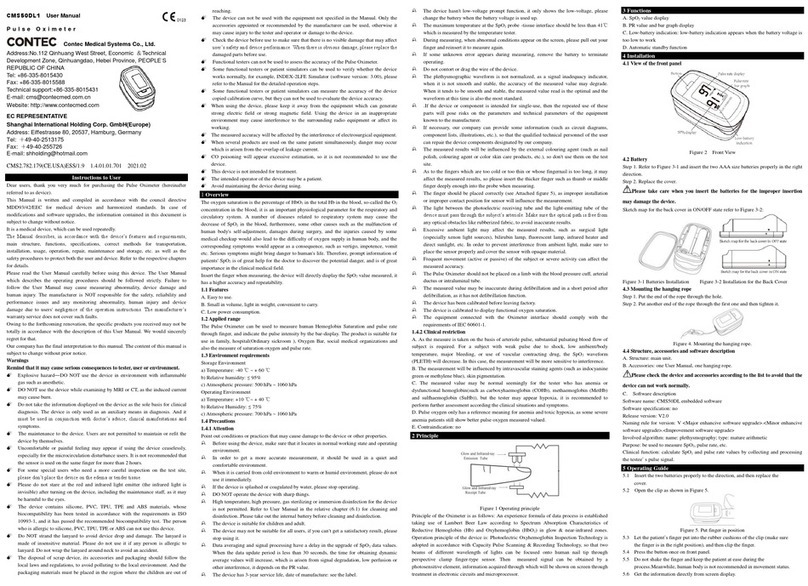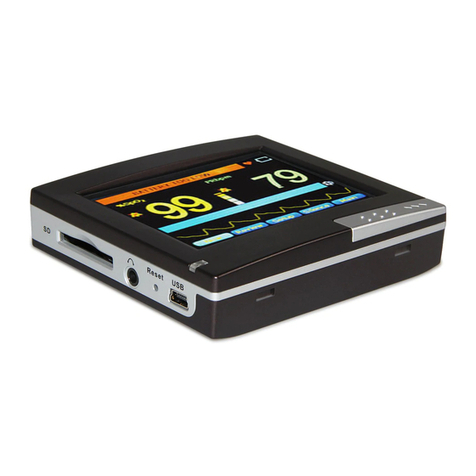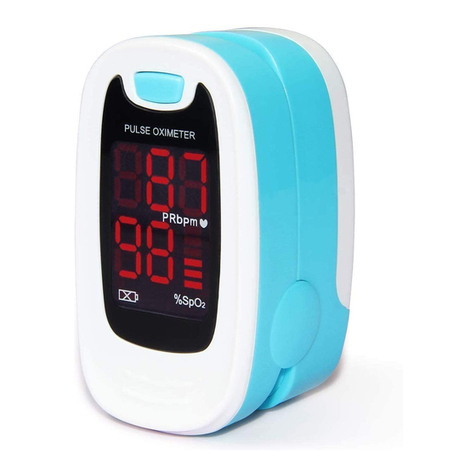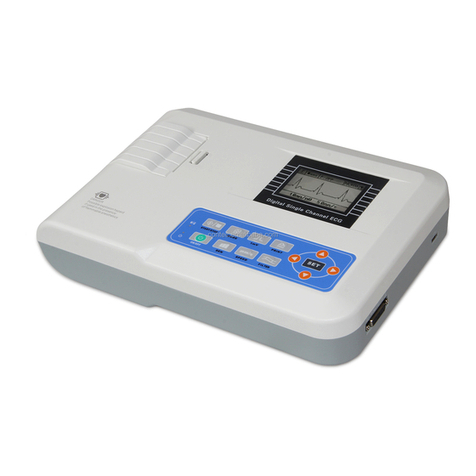1 Safety Guidance
1.1 Introduction For the Safe Operation
The CMS800G Ultrasonic Fetal Doppler Monitor (Monitor) is Class I equipment and
designed to comply with IEC 60601-1.
Switching within 1 minute, at ambient temperatures between 5℃ and 40℃ . Ambient
temperatures that exceed these limits could a ect the accuracy o the instrument and cause
damage to the modules and circuits. Allow at least 2 inches (5cm) clearance around the
instrument or proper air circulation.
The user must check the equipment, cables and transducers do not have visible evidence o
damage that may a ect patient sa ety or monitoring capability be ore use. The recommended
inspection interval is once per week or less. I damage is evidence, replacement is
recommended be ore use.
The user must be serviced only by authorized and quali ied personnel, The manu acturer can
not accept responsibility or sa ety compliance, reliability and per ormance i modi ications
or repairs are carried out by unauthorized personnel. Identical replacement parts must be
used.
Per orm period sa ety testing to insure proper patient sa ety. This should include leakage
current measurement and insulation testing. The recommended testing interval is once per
year.
The protection categories against electric shock o the patient connections are:
①FHR1 ②FHR2 ③TOCO MARK④
This symbol indicates that the instrument is IEC 60601-1 Type B equipment. Type B protection
means that these patient connections will comply with permitted leakage currents, dielectric
strengths and protective earthing limits o IEC 60601-1.
The monitor described in this user manual is not protected against:
A) The e ect o de ibrillator shocks
B) The e ects o de ibrillator discharge
C) The inter erence o high requency currents
D) The inter erence o electrosurgery equipment
E) The inter erence o mobile phone
1.2 Ultrasound Safety Guide
Fetal Use
The Monitor is designed or continuous etal heart rate monitoring during pregnancy and
labor . Clinical interpretation o etal heart rate patterns can diagnose etal and/or maternal
problems and complications.
Instructions for Use in Minimizing Patient xposure
The acoustic output o the Monitor is internally controlled and can not be varied by the
operator in the course o the examination. The duration o exposure is, however, ully under
the control o the operator. Mastery o the examination techniques described in the User
Manual will acilitate obtaining the maximum amount o diagnostic in ormation with the
minimum amount o exposure.

